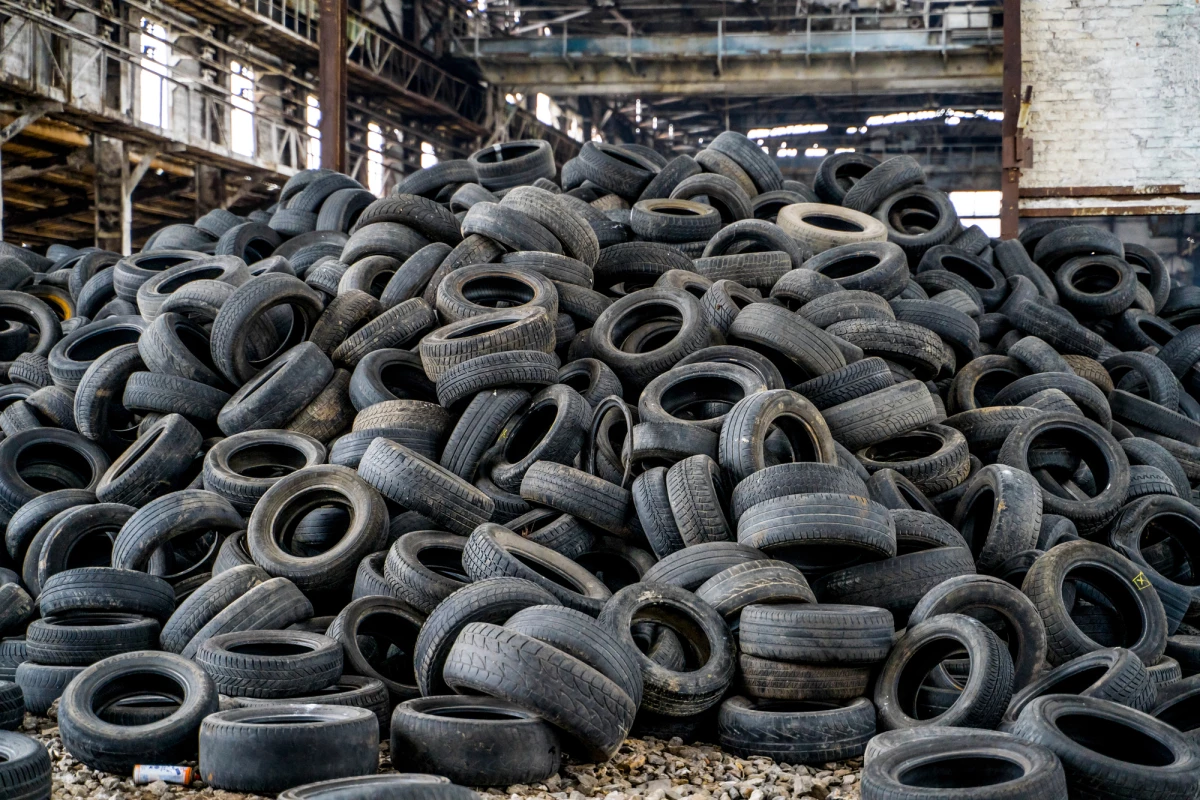Researchers at Rice University have developed a new process to convert old tires into graphene, which can then be used to make concrete. Not only is it more environmentally friendly, but the team says the resulting concrete is substantially stronger.
The research builds on the team’s previous breakthroughs in making graphene through a process called flash Joule heating. Essentially, this involves using a jolt of electricity to quickly superheat almost any carbon source to around 2,725 °C (4,940 °F), converting it into graphene flakes. Specifically, it’s a form of the material known as turbostratic graphene, which has layers that don’t line up perfectly. That makes it more soluble, and easier to integrate into composite materials.

Last year the team demonstrated the technique using waste products like food or plastic – and now, they’ve moved onto discarded tires. The Rice team says that previous efforts to convert tires directly into graphene didn’t yield the best results, so for the new study they turned to the material left over after they’ve undergone a common recycling process.
Pyrolysis involves burning tires in a low-oxygen environment, which creates an oil that’s very useful for a range of industrial processes. But it also produces a solid carbon residue that’s been harder to find new life for.
The Rice researchers found that this tire-derived carbon black was a great candidate for producing flash graphene. When they put the material through flash Joule heating, some 70 percent of it was converted into graphene, while a mixture of shredded tire rubber and commercial carbon black yielded around 47 percent.
Next, the team demonstrated a particular use case for the new graphene material – concrete production. They added 0.1 weight/percent (wt%) for the graphene produced from tire carbon black, and 0.05 wt% for the mixture of carbon black and shredded rubber into Portland cement. They found that concrete cylinders made with this cement showed around 30 percent better compressive strength than concrete made without the graphene additive.
“This increase in strength is in part due to a seeding effect of 2D graphene for better growth of cement hydrate products, and in part due to a reinforcing effect at later stages,” says Rouzbeh Shahsavari, co-lead author of the study.

The team says that the graphene-reinforced concrete has several environmental benefits. Not only could it help prevent waste tires from ending up in landfill, but the extra strength of the final material could reduce the amount of concrete needed in structures.
“Concrete is the most-produced material in the world, and simply making it produces as much as 9 percent of the world’s carbon dioxide emissions,” says James Tour, co-lead author of the study. “If we can use less concrete in our roads, buildings and bridges, we can eliminate some of the emissions at the very start.”
The research was published in the journal Carbon.
Source: Rice University






